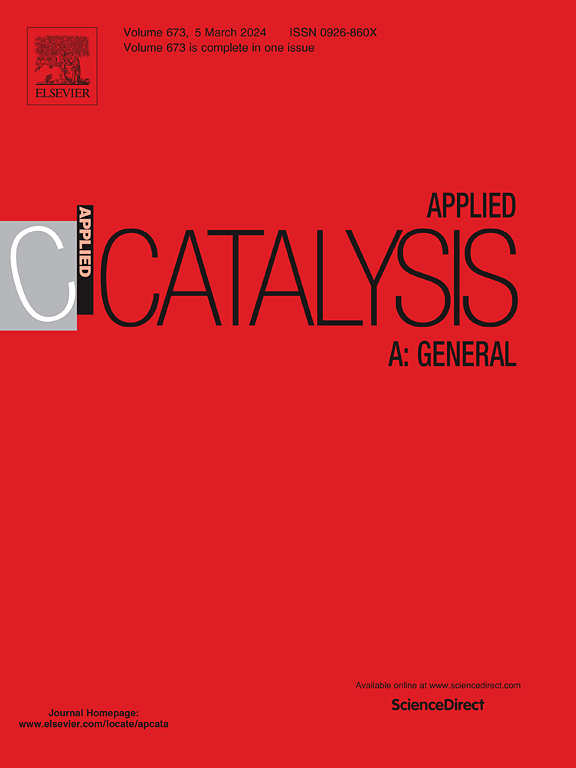One-pot xylose-to-cyclopentanone conversion tuned by intermediate partitioning behavior and poisoning-resistant multifunctional Co/Nb2O5 catalysts
IF 4.7
2区 化学
Q2 CHEMISTRY, PHYSICAL
引用次数: 0
Abstract
Cyclopentanone (CPO) is a versatile chemical intermediate with great industrial relevance. In this work, a sustainable one-pot process converting xylose to CPO was developed via biphasic solvent engineering and a multifunctional Co/Nb2O5 catalyst, overcoming challenges of intermediate condensation and catalyst poisoning. Biphasic solvent system was formulated to integrate the two-stage process, based on the partitioning behavior of key intermediates to avoid unfavorable condensation while maintaining effective acid-assisted ring arrangement in aqueous phase. Co/Nb2O5 outperformed noble metals with 53 % CPO selectivity, attributed to its dual Brönsted/Lewis acidity, moderate hydrogenation capability, and resistance to carboxylic acid byproducts poisoning. Further structure-activity relationship analysis demonstrated that reduction temperature dependent Coδ+ species are critical for FFR conversion, with Coδ+/Cototal ratio presented a linear correlation with FFR conversion rate. This integrated strategy eliminates energy-intensive steps, offering a practical guidance toward catalytic reaction system design for facile and efficient one-pot conversion of xylose to industrially high-value compounds.
利用中间分配行为和耐中毒多功能Co/Nb2O5催化剂调控木糖一锅制环戊酮转化
环戊酮(CPO)是一种用途广泛的化工中间体,具有重要的工业意义。本研究通过双相溶剂工程和多功能Co/Nb2O5催化剂,克服了中间缩合和催化剂中毒的难题,开发了木糖可持续一锅制CPO工艺。基于关键中间体的分配行为,建立了两相溶剂体系,以整合两阶段过程,以避免不利的缩合,同时保持水相中有效的酸助环排列。由于Co/Nb2O5具有双重Brönsted/Lewis酸、适度的加氢能力和抗羧酸副产物中毒能力,其CPO选择性优于贵金属,达到53 %。进一步的构效关系分析表明,依赖于还原温度的Coδ+物质是FFR转化的关键物质,Coδ+/Cototal比值与FFR转化率呈线性相关。这种综合策略消除了能源密集型的步骤,为催化反应系统设计提供了实用的指导,使木糖易于高效地一锅转化为工业高价值化合物。
本文章由计算机程序翻译,如有差异,请以英文原文为准。
求助全文
约1分钟内获得全文
求助全文
来源期刊

Applied Catalysis A: General
化学-环境科学
CiteScore
9.00
自引率
5.50%
发文量
415
审稿时长
24 days
期刊介绍:
Applied Catalysis A: General publishes original papers on all aspects of catalysis of basic and practical interest to chemical scientists in both industrial and academic fields, with an emphasis onnew understanding of catalysts and catalytic reactions, new catalytic materials, new techniques, and new processes, especially those that have potential practical implications.
Papers that report results of a thorough study or optimization of systems or processes that are well understood, widely studied, or minor variations of known ones are discouraged. Authors should include statements in a separate section "Justification for Publication" of how the manuscript fits the scope of the journal in the cover letter to the editors. Submissions without such justification will be rejected without review.
 求助内容:
求助内容: 应助结果提醒方式:
应助结果提醒方式:


